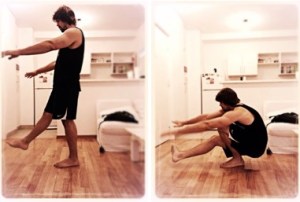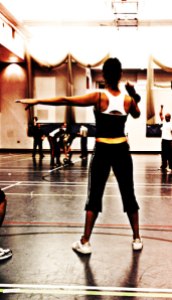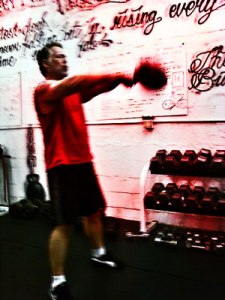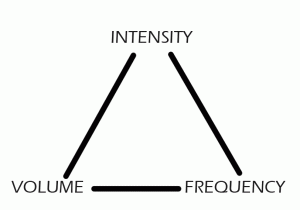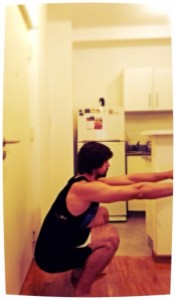Why you need to strength train
Bear in mind, I’m not talking competitive lifting. Especially in regards to health.
It has a larger carryover to all other attributes
Endurance, power, speed and even flexibility should be built from a foundation of strength. You can’t endure if you don’t

Hand balancing moves: great feats of balance, only achievable by having enough strength to keep the position
have anything to endure on. If you can’t move something there’s no chance that you’ll move it fast, the same goes for running. And, if you can’t reach somewhere with strength, then there’s no really a point to it, is there? (but kidding aside, just get strong).
Of course, this doesn’t mean that you’ll be breaking world records in marathon running if you solely train for strength. But, you will get more endurance from strength training than strength from working on your endurance. I don’t know if it’s because the relative intensity of other things will be lower, but it works.
Aesthetics
I don’t care if this rates high or low for you, but, relative to body-composition, barring people with health concerns, the goal is mainly for looks. Well, strength training will help build lean muscle mass (not bodybuilder sizes), which in turn will raise your basal metabolism, which will, In turn, burn more calories while you’re resting. This of course, will mean less fat under the same amount of calories consumed. This is especially true for beginners (which my friend most certainly is).
Health
I’m talking about muscle and joint health. As long as you are being consistent and making slow improvements, the low rep approach keeps the joints from being overworked in any range of motion.
By this I am most certainly not saying that other types of exercises are not healthy. All exercise is healthy, if done as it should be, I simply believe that strength training is healthier for the joints and muscles. Cardiovascular health is better addressed with other types of training.
Motivation
This is more personal based than any other thing. But truth be told, there’s little things more invigorating than moving constantly heavier weights or do more complex moves. It was, during a whole year, one of the things that compelled me to keep coming back to the weight room (I was doing PTTP, and the constant adding of weight does wonders for the self-image). Besides, it’s also very cool to still have energy to celebrate the accomplishment and not just smiling while picking up your lungs from the ground.
How to strength train
How often should you do it
This Is one of the most asked questions “how often should/can I work out”. As I’ve said several times before, I’m biased to higher frequency types of training, but you’ll do fine with just 3 times a week (or even two). As long as your overall volume and intensity are balanced you can even practice up to 7 times a week, although this may be too much for most. Try to keep it between 3 and 5 weekly sessions.
Exercises that must be there
This will be no rocket science, only multi-joint exercises apply to these categories.
- Upper body push
- Upper body pull
- A knee bend (SQUAT)
- A hip hinge
- Core
- A carry
You can even divide the upper body into vertical and horizontal pushes and pulls. I don’t care, have at least one of the main categories and you’ll be balanced enough. Any other exercise you may want to do that’s not included in your list before will be tagged as assistance exercise, and their function is either to help build strength for those exercises or to strengthen one of your weaknesses.
Understand that if you’re doing bodyweight only exercises the carry should be done either with an external implement or, switch it with sprints or crawls. If you’re KB exclusive, your hip-hinges will be more ballistic based, and your core exercises should be either windmills or TGUs.
How to incorporate strength training to other types of training
There’s not really a best way to go about this, but will depend more on your context and how you’re working out, just remember that resting is a serious matter and should not be overlooked.
The easiest way would be to add at least 2 exclusive strength training sessions to your week. Make it low volume and go

Carry, whatever, just carry heavy stuff. Photo by Carol Browne
through all the movements, doing at least 3 sets for each. Repeat the workout or add weight in the next session.
If by chance you can’t add any more session a week, add 2 completely unrelated movements to your workouts. Push+hinge/pull+squat/Core+carry has worked pretty well for me before.
And that’s about it. I’d love to hear your take on things, so drop a line at the comment section below!





